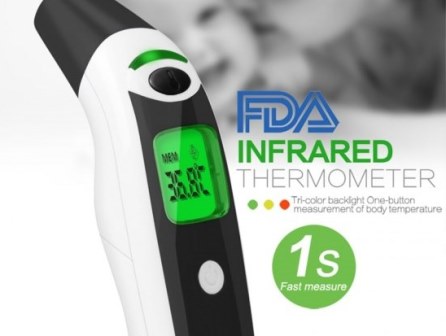Fever is a temporary increase in body temperature, often due to illness. Having a fever is a sign that something out of the ordinary is happening in your body.
For an adult, a fever can be uncomfortable, but it is usually not a cause for concern unless it reaches 103 F (39.4 C) or higher.
Fevers usually go away within a few days. Several over-the-counter medications reduce fever, but sometimes they are best left untreated.
Fever seems to play a key role in helping your body fight a number of infections.
You have a fever when your temperature rises above its normal range. What is normal for you may be slightly higher or lower than the average normal temperature of 98.6 F (37 C).
Depending on the cause of the fever, additional fever signs and symptoms may include:

Fever symptoms
- Sweating.
- Chills and shivering.
- Headache.
- Muscle aches.
- Loss of appetite.
- Irritability.
- Dehydration.
- General weakness.
How to tell if you have a fever without a thermometer?
Many people can recognize when they have a fever. Some describe it as a feeling of warmth.
There is no completely accurate way to diagnose fever without using a thermometer.
However, certain techniques can give a person a good idea of whether or not they have a fever. These methods include:
- Taking temperature on forehead
- Skin pinch test for dehydration
- Flushed cheeks
- Urine colour chart and meaning
- Listen to your body
Taking temperature on forehead
Touching the forehead of a person with the back of the hand is a common method of finding out whether or not they have a fever.
If the person has a fever, his forehead may be very hot. This may be inaccurate, but it can provide general information.
However, a person with a suspected fever who touches his forehead may not feel anything unusual. For this reason, it is important to ask someone else for help.
A person can also check for fever by resting their cheek against the person’s forehead. However, this may not be advisable if they suspect that he is ill with a contagious disease.
A person should always wash their cheek after resting it against another person’s forehead.
Skin pinch test for dehydration
Dehydration can be a sign of a fever. To check for dehydration, a person can gently pinch the skin on the back of the hand, then release the skin and observe it closely.
If they are well hydrated, your skin will snap back into place very quickly. If the skin moves slowly, the person may be dehydrated.
However, this method can also be inaccurate, as dehydration does not always indicate a fever.
Flushed cheeks
Looking in a mirror for signs of flushed cheeks can help a person know if they have a fever or not. If so, the cheeks may be reddish or purple, or they may just be more colored than usual.
Urine colour chart and meaning
The color of urine can also help indicate whether or not someone has a fever. Fever dehydrates the body, which can prevent you from producing as much urine as usual.
This leads to more concentrated urine, which may be dark yellow or orange in color and possibly have an odor.
Listen to your body
Chances are, you’re already familiar with what a fever feels like to you, from feeling so hot that you have to throw the covers and turn on the air conditioning, to out-of-the-ordinary chills.
Tiredness that goes beyond typical end-of-day fatigue, or headaches, body aches and pains that cannot be explained. If any of the above sounds familiar, you may have a fever.
Prevention of fever
You may be able to prevent fever by reducing your exposure to infectious diseases. Here are some tips that can help:
- Wash your hands frequently, especially before eating, after using the bathroom, after spending time in crowds or near someone who is sick, after petting animals, and during public transportation rides.
- Carry hand sanitizer with you when you don’t have access to soap and water.
- Try to avoid touching your nose, mouth, or eyes, as these are the main ways viruses and bacteria can enter your body and cause an infection.
- Cover your mouth when you cough and your nose when you sneeze.
- Whenever possible, stay away from others when coughing or sneezing to avoid spreading germs to them.
- Avoid sharing glasses, water bottles, and utensils.

How to Check Body Temperature without Thermometer?
Identifying a fever is relatively simple if a person has a thermometer. Even without one, there are certain ways of telling whether or not a person has a fever.

Infrared Thermometer for home use
- What are the Top 10 Thermometers Made In the USA in 2021?
- What is the best-infrared thermometer made in the USA?
